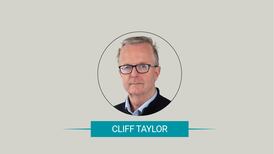Mr Bob Horastead, the newly appointed director and general manager for Xerox Ireland, is a bit of an old-fashioned company man - at least in terms of his tenure at Xerox.
In an industry that often features short-term deployments with an employer rather than long-term working up through the ranks, Mr Horastead's 25 years with the copier and document giant is unusual.
"I kind of stumbled into a job I liked the look of," he laughs.
But his first actions at the top of Xerox Ireland have hardly been conservative or restrained.
He's decided Xerox should be more aggressive in Ireland and is pushing out two products - one low-end and brand-new, the other high-end and a year old - to what was formerly seen as a too-small, too-little-profit Irish market.
Portugal is similarly small and has become a success story for pushing a broader range of Xerox products, so Mr Horastead felt Ireland should not be written off, especially for big-ticket items.
"I am absolutely convinced that our biggest strength lies in our breadth of products and our services," he says.
Therefore Irish buyers can now - depending on the depth of their pockets - ponder buying Xerox's new entry-point colour laser printer for €699 or the iGen3, a state-of-the-art digital colour press aimed at the printing industry, ticketed at €750,000.
Offering two products at opposite ends of the price and features scale is deliberate, he says. "I think it typifies the strengths that we have, our flexibility in our range."
One thing Xerox, one of the older names in the technology business, is not short of is breadth.
Many think of it solely as a copier manufacturer - a limiting designation that the company has worked hard to dispel in recent years (it prefers to call itself "the document company").
But Xerox works on projects as wide-ranging as electronic paper; tiny sensors that could be embedded in road surfaces; search technologies and content protection; wireless technologies; and even biomedical approaches to early cancer detection.
It is also the place where most of the elements of modern computing - such as the graphical user interface, Ethernet and the windows desktop design - were developed, although unfortunately for the company's bottom line, not often commercialised.
Some of that diversity has caused difficulties for the company in the past, as it has struggled to commercialise some of its newer research, or bet on products and developments that didn't pan out with the market.
As a result, its fortunes in recent years have at times been not just disappointing but grim, with some industry observers and analysts ready to write off the company.
But the recent arrival of new chairman and chief executive Ms Anne Mulcahy - also a career Xeroxer - has seen the company slim down and focus.
That slimming included the loss of a 400-person new development in Dundalk - with Xerox having to repay the Government some €8.6 million in grants - although, otherwise, the Republic's workforce largely escaped the knife felt elsewhere.
The Republic lucked out partly because of timing, according to Mr Horastead.
"We were making a commitment to Ireland, so the pain was felt elsewhere," he says, noting the company still believes some elements of operations could relocate here.
"Strategically, we're very committed to Ireland. We have made a huge investment in it," he says.
Ms Mulcahy's leadership has been well-received within the company, according to Mr Horastead.
"Oh, she's very popular inside the company. She's kept things simple, and she's kept a company focus," he says. "There's a sense of common purpose and a sense of reality."
But there has been a lot of pain as well, he notes.
"She's very proud of the company, and very keen to have the company return to greatness. But as a result, she had to make some very tough decisions," he says. This included thousands of redundancies.
More recently, Xerox looks to be cautiously on the rebound. It has just posted its largest quarterly profit since 1999, mostly on new products such as additions to its colour copier line.
But Wall Street expressed some uncertainty - causing shares to drop - as analysts felt profits were primarily based on low-margin items. However, several analysts noted that they believed the company was now a good longer-term investment.
At the moment, the company is about "multi-functionality", says Mr Horastead.
Indeed, the term "copier" is getting closer to becoming meaningless. Even the smaller office copy machines tend to also function as faxes and scanners, he points out.
The iGen3 combines a printing press, copier and computer into a device that can take a company's database of customers, note their purchasing record or interests, and then print out an specifically targeted brochure for every individual.
And colour as an element of Xerox's offerings all across the board is only set to grow, as customers continue to want to move away from the restrictions of plain old black and white.
All of which is a long, long way from the first clunky laser printer, test-driven in Xerox's famous Palo Alto Research Centre (PARC) in - believe it or not - 1971.
It was founded in 1906 as the Haloid Company and renamed Xerox in 1961.
Xerox chief executive and chairman Anne M Mulcahy along with HP chief executive Carly Fiorina are the technology sector's most powerful women.
Its headquarters are in Stamford, Connecticut
Xerox has 61,000 employees worldwide, with 35,600 in the US and 1,800 in the Republic.
The Irish operations, established in 1962, are located in Dublin and Dundalk.
2003 revenue was $15.7 billion; 2003 income was $360 million.
2003 research and development spend was $868 million or 5.5 per cent of revenue.
Xerox hates to have its trademark named used as a verb.









